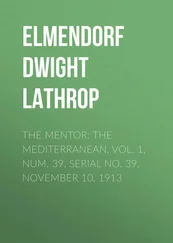While I turned things on and buried dead mice, Wanda began to remove the plastic sheeting which protected the mattresses on the old iron bedsteads which are painted with flowers, some of them inlaid with mother-of-pearl, beds she had bought, or had simply been allowed to cart away, years ago, when the local farmers’ wives had decided to modernize their houses and had thrown them out to rust in their back yards.
Outside, in the vineyard on the side of the hill, the grapes looked healthy enough, having been sprayed with copper sulphate throughout the summer, and quite good, but not very numerous. It had been a very wet spring and had continued to be wet right into June, but what had then followed had been a phenomenally hot summer, even for Italy, with shade temperatures week after week up in the hundreds Fahrenheit, and absolutely no rain; and this weather had persisted into autumn, apart from a few short, welcome downpours. Down in central Tuscany, even as far north as Lucca, the grapes were abundant and it would be a good year. Here, where we lived, where often in early autumn it rained and rained when the sirocco blew from Africa, and the grapes then began to suffer from muffa , mildew, or a sudden hailstorm could destroy an entire crop in a few minutes, it was increasingly rare to have an outstanding year for what would never be, even if the grapes were outstanding, outstanding wines. Here, in an area which only appears on the most optimistic wine maps as being of moderate wine production, we and the neighbouring farmers make white and red wine, using as many varieties of grapes as possible, in our case about six, as a talisman principally against disease.
The end product is not what is known as DCG ( Denominazione Controllata e Garantita ), or DOC ( Denominazione Origine Controllata ), or even, until recently, DS ( Denominazione Semplice ), the humblest of all denominations, because in order to satisfy these minimal requirements, it would have to have a label stating the region in which it was produced, something I had never seen before 1983.
This wine can rarely, if ever, be found on sale even in local shops. When our neighbouring farmers sell what is surplus to their own enormous requirements, then it invariably finds its way into private houses or the sort of trattoria which announces its cooking as being cucina casalinga , the sort the best Italian mothers turn out every day for the whole of their working lives. This is because it fulfils the demand, which is becoming every year more difficult to satisfy, not only in Italy but in every other wine-producing country, for everyday drinking wine that has no additives, the sort of wine that has neither been pasteurized nor clarified with pills, although it is almost impossible to make white wine that can travel without any kind of help that will not change its colour. Wine that has been too generously assisted in this way, however, possibly with the addition of sodium bisulphate, looks like water, has a sickly aftertaste and gives the drinker a ferocious headache with its epicentre between the eyebrows.
The harvesting of the grapes, here where we live, hardly ever begins before the festa of San Remigio, which takes place on 1 October each year at Fosdinovo, a large village on the hill some nineteen hairpin bends above us. The stone effigy of San Remigio, the patron saint of the town, a saint who baptized Clovis, King of the Franks, stands high above the altar in one of the two churches. Also high up to one side of it is the tomb of one of the Malaspina family, feudal lords of this part of Italy, which is still called Lunigiana, after Luni, a Roman city and seaport now high and dry on what had been the northern borders of ancient Etruria. They still own and inhabit the castle which looms above the rooftops and in which Dante stayed.
For weeks before the festa there is bee-like activity everywhere and all the specialist shops along the terrible, traffic-ridden Via Aurelia, one of the great Roman roads to Rome, which sell barrels, hods, grape crushers and presses, have them prominently displayed outside their premises.
The actual festa begins to assemble itself early in the morning, long before dawn, when a procession of vans, lorries and motor cars starts groaning up the hill to the town loaded with merchandise which will later be displayed on the stalls in the open-air market place under the plane trees below the village. It is mostly cheap stuff, but some products of the pre-plastic age still persist: copper cauldrons, earthenware casseroles, mousetraps made of wood that look like lock-up garages, thick woollen socks and vests and the bed-warmers known as preti , priests, wooden frameworks which you put between the bedsheets on cold winter nights with an iron pot full of hot ashes inside them and which warm a bed in a way that no other kind of warmer can. Also on sale will be pack-mules, pigs and cattle. The animals are sold on the same patch of ground that has been used for this purpose as long as anyone can remember, although it has now been turned into a children’s playground and is full of plastic gnomes. And there is plenty to eat. In the market you can also buy panini , big, crusty sandwiches filled with delicious slices of pork cut from a young pig that has been roasted on a spit. And there is also plenty to drink. Until recently there were open-air drinking booths under the plane trees at which you could sit and eat panini and drink last year’s wine at tables with white cloths on them. Now, if you want to eat and drink you have to do it indoors because it is very rare, almost unknown, for it not to pour with rain on the festa of San Remigio. Last year was an exception. This is the day, too, when Wanda, and she did it for more than fifteen years, worked in one of the two hotels as a waitress, to help out with the farmers’ lunches, invariably receiving an offer of marriage from one of them who had become a widower in his fifties.
This year we have arrived too early for San Remigio, but not too early to harvest our grapes and make our wine, or help others with their vendemmia , the harvesting and the wine-making. We always help four families with the vendemmia . The harvesting of the grapes usually takes one or two days; the fermentation takes about ten days. To be asked to help is an honour because it means that we are regarded as hard workers, and therefore earn the prodigious quantities of wine and food that are served throughout the vendemmia .
It takes several days to get ready for our own vendemmia . All the barrels have first to be washed and scrubbed and then kept standing upright with a hose running water into them until the seams swell and close and they no longer leak. So on the first morning when the vendemmia begins we start work with the family which owns the farm across the road from where the track leads down to our house. We have known them ever since we first came here. Their children have come to England and stayed with us and we have seen them grow up, get married and themselves have children.
Tomorrow, around seven-thirty, dressed in our oldest clothes, we will turn up at the big modern farmhouse they have built to replace the old, more beautiful one, armed with baskets with iron hooks on them so that we can hang them from the pergole , the horizontal wires on which vines are trained, while we cut the grapes with scissors, secateurs, or just sharp knives, all of which become equally painful to handle when you use them day after day.
If the family is an efficient one, and this one is highly efficient, there should be about a dozen people waiting outside, and the tractor should be warmed up and the trailer attached to it, already filled with the heavy hods called bigonci , sometimes made of plastic now and much lighter, in which the grapes are brought back to the house and poured into the macchina da macinare , the grape crusher. If they are an inefficient lot and no one else has turned up, which often means they have forgotten to ask them, a lot of screaming across valleys to other houses takes place – ‘Maariaaa! Ahmaaandoh! Doveee seei?’ (‘Maria! Armando! Where are you?’) – just as they had screamed at one another across similar expanses up in the nearby Apennines when I was hiding from the Germans. Or they could still be scrubbing the barrels or even waiting for the barrel staves to swell sufficiently to stop the barrels leaking, which should have been done long before, or perhaps the man with the tractor hasn’t arrived, in any of which cases we hang about and get cheesed off. The most inefficient people we know are the P.… s, who are never ready. One year the bottom literally fell out of their biggest barrel, which was really enormous, after we had quarter filled it with crushed grapes. Yet in spite of being highly inefficient, they make some of the best wine in the district.
Читать дальше












